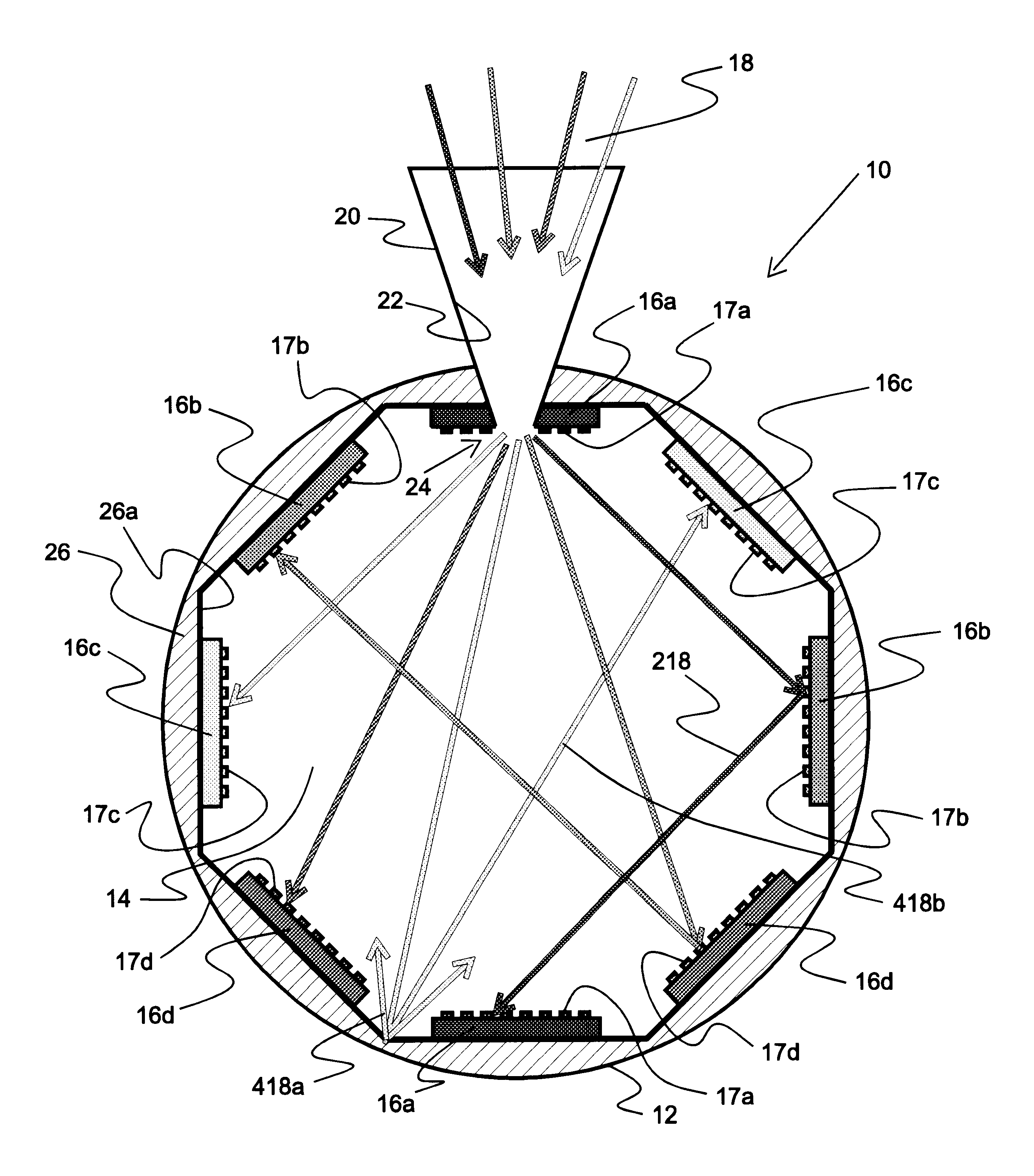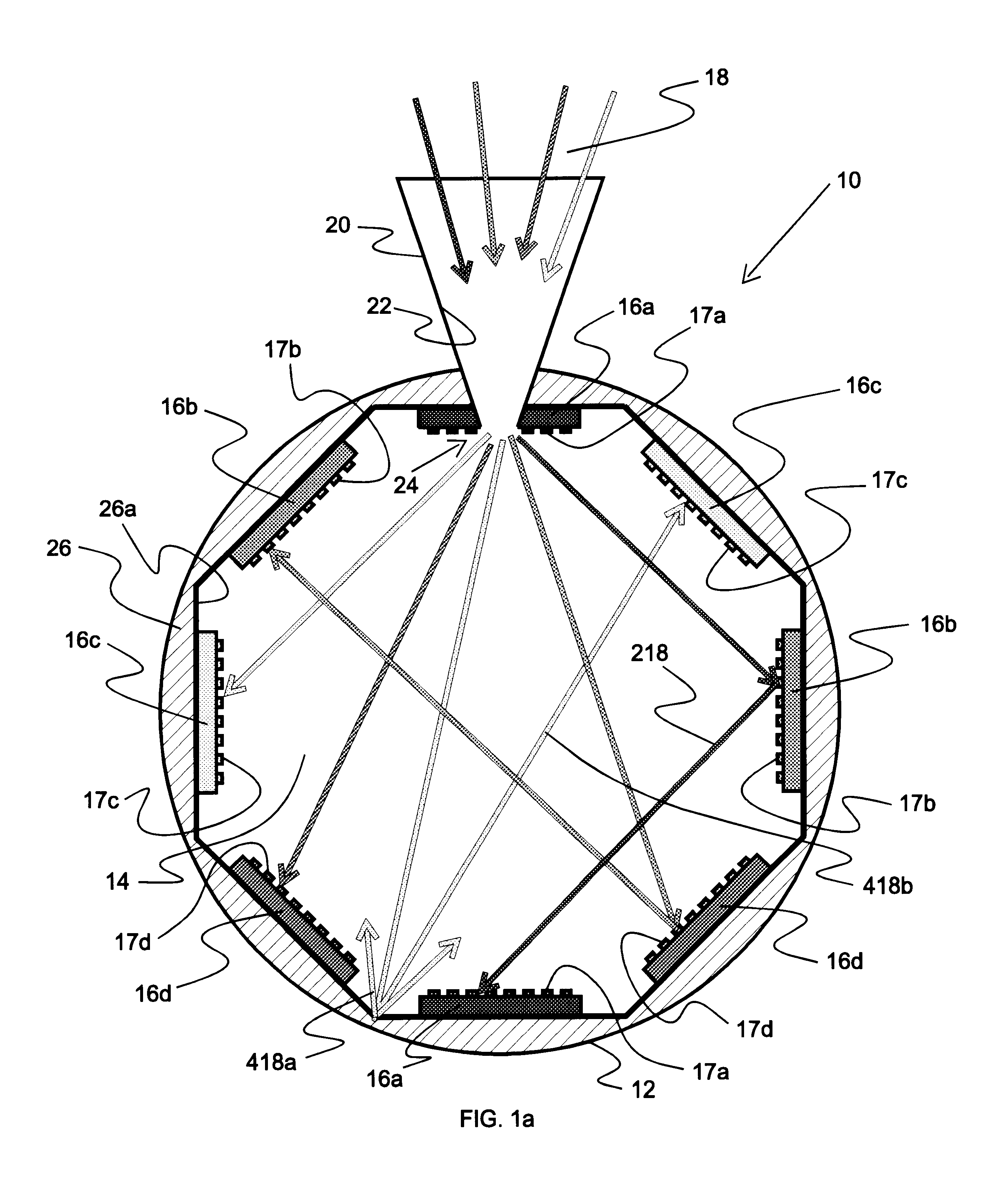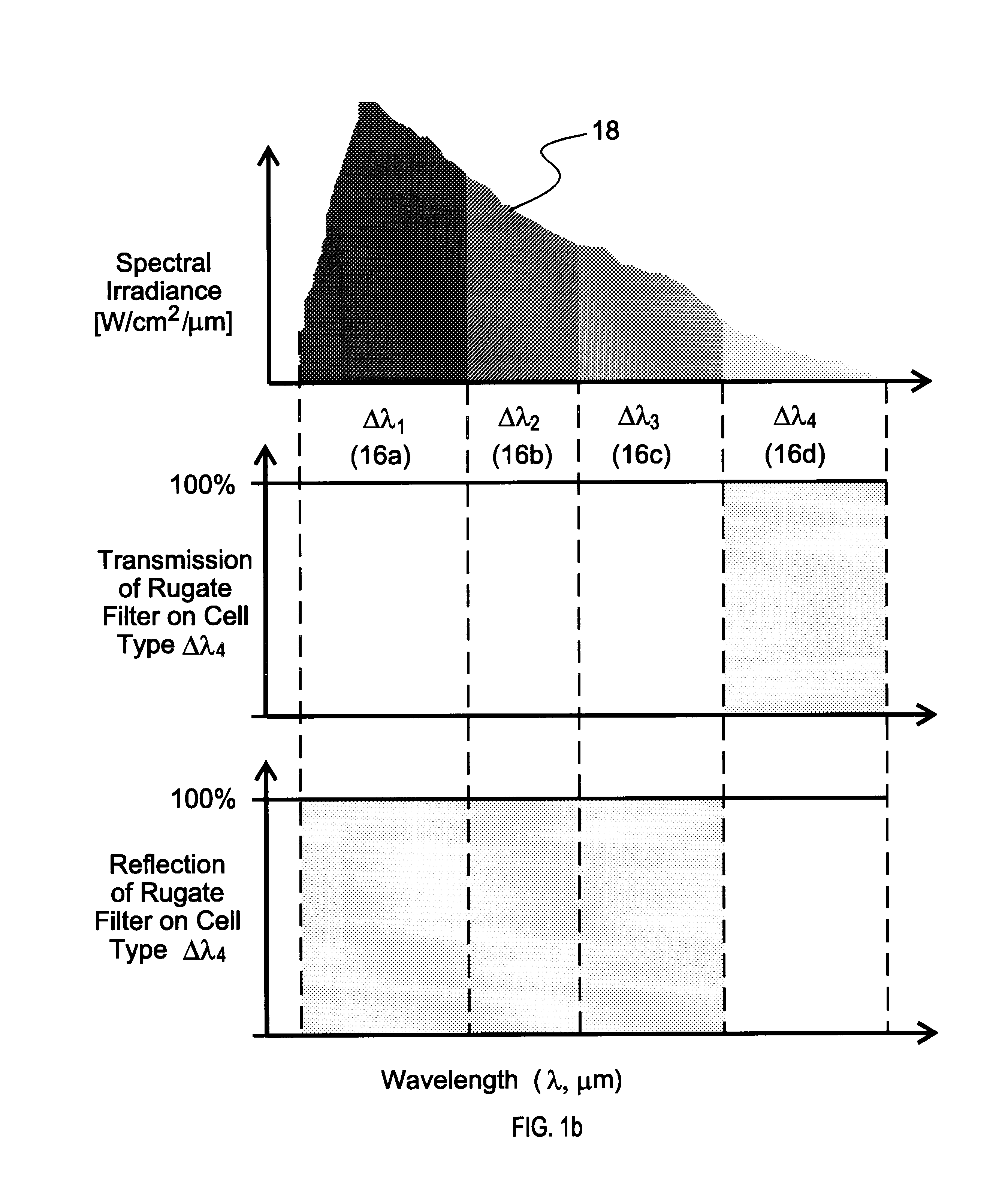Concentrating photovoltaic cavity converters for extreme solar-to-electric conversion efficiencies
a photovoltaic cavity and conversion efficiency technology, applied in thermal-pv hybrid energy generation, machines/engines, control devices, etc., can solve the problems of wasting the remainder of available energy outside of their limited spectral response, and wasting the excess energy of photons
- Summary
- Abstract
- Description
- Claims
- Application Information
AI Technical Summary
Benefits of technology
Problems solved by technology
Method used
Image
Examples
Embodiment Construction
Reference is now made in detail to a specific embodiment of the present invention, which illustrates the best mode presently contemplated by the inventor for practicing the invention. Alternative embodiments are also briefly described as applicable.
The invention herein is directed to the performance of a photovoltaic cavity converter (PVCC) module designed for a concentration in the range of 500 to over 1000 suns and a power output range of a few kilowatts to 50 KW.sub.e when combined with a primary dish and a secondary concentrator. A 1.5 KW prototype unit is presently being developed for use at the NREL High-Flux Solar Furnace (HFSF). The module herein is also expected to find use in, for example, DOE's Concentrating Solar Power (CSP) program to develop systems in the 1 to 5 kW.sub.e and 10 to 30 kW.sub.e size ranges based on reflective optics. A typical power range is about 30 to 50 kiloWatts. Connecting a plurality of such modules together in a power plant permits power generati...
PUM
 Login to View More
Login to View More Abstract
Description
Claims
Application Information
 Login to View More
Login to View More - R&D
- Intellectual Property
- Life Sciences
- Materials
- Tech Scout
- Unparalleled Data Quality
- Higher Quality Content
- 60% Fewer Hallucinations
Browse by: Latest US Patents, China's latest patents, Technical Efficacy Thesaurus, Application Domain, Technology Topic, Popular Technical Reports.
© 2025 PatSnap. All rights reserved.Legal|Privacy policy|Modern Slavery Act Transparency Statement|Sitemap|About US| Contact US: help@patsnap.com



